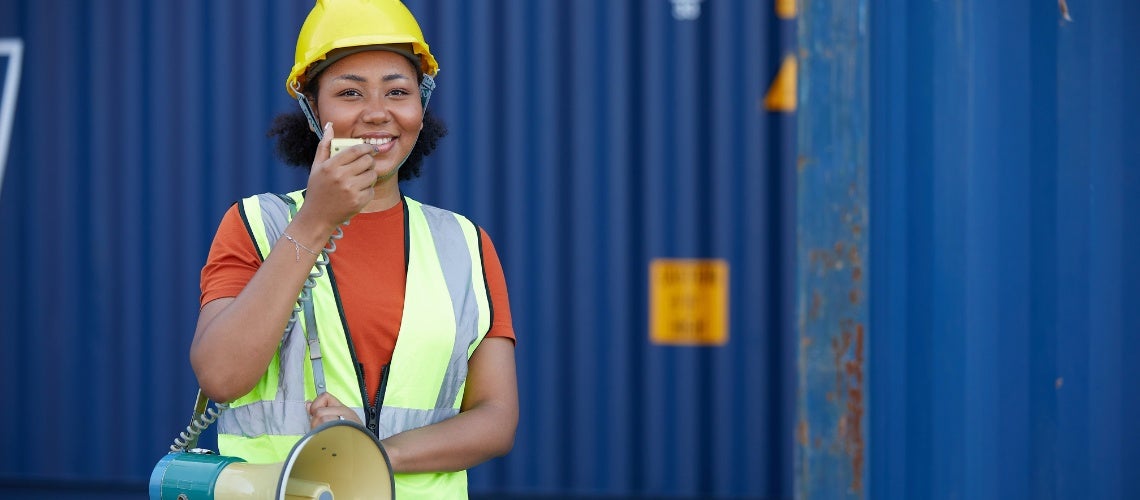 Woman representing inclusive early warning systems.
Woman representing inclusive early warning systems.
The rain started two days ago and doesn’t seem to stop. You are a woman of an ethnic group that doesn’t speak the official government language of your country, and the only family mobile phone is with your husband. As the rain persists, he receives an evacuation alert on his phone while at work but can't understand it. You remain at home, unaware of the urgent message as the river waters start rising. There is barely time to gather the children and essential items, including your official government documents. Thankfully, you and your children make it to a shelter in time, a flicker of hope in the chaos. Yet the haunting uncertainty about your husband's safety remains; could he be at another shelter? In this case, a comprehensible warning could have prevented emotional trauma, the heart-wrenching uncertainty about your husband's safety, and the loss of vital documents. It underlines the dire necessity for alerts that everyone can understand, a change that could potentially save many lives, including those less fortunate, who couldn't respond in a timely way otherwise.
While the above depicts a theoretical scenario, it is a stark reflection of the real challenges many communities face globally during emergencies, where language barriers and limited access to technology can exacerbate the dangers posed by disasters. Keeping this in mind, let's look at the bigger picture of early warning systems (EWS) and inclusivity.
What do we mean by Inclusive EWS?
First, we must acknowledge that disasters don't affect everyone equally. The world's most economically and socially vulnerable populations often bear the brunt of these impacts. Disasters disrupt education, harm health, hinder economic growth, and impede recovery efforts. Gender disparities further exacerbate these inequalities, affecting economic opportunities and personal agency. Persons with disabilities, representing about 15% of the global population, face even greater challenges and are up to four times more likely to perish in disasters due to barriers like attitudinal, physical, or economic constraints. Addressing their needs is imperative in designing effective EWS.
Are Inclusive EWS a development priority?
Inclusive EWS are essential in mitigating disaster impacts and fostering sustainable development. By integrating disaster risk reduction and climate change adaptation strategies, we can address the unique needs of diverse groups , including marginalized communities and individuals with disabilities. The goal is to create alert systems that are accessible to all, offering clear, timely, and inclusive warnings that empower everyone to respond effectively to emergencies, ensuring not just safety but also the well-being and progression of all communities. For instance, Haiti, with European Union (EU) and Global Facility for Disaster Reduction and Recovery (GFDRR) support, launched public campaigns specifically targeting women and youth, using local musicians and media to promote hurricane preparedness. Similarly, Sri Lanka, vulnerable to extreme weather patterns, collaborated with the World Bank to amplify its EWS through community-centric strategies.
How are we pushing the global agenda forward?
Recognizing the pivotal role of EWS, the Sendai Framework for Disaster Risk Reduction 2015-2030 emphasizes a participatory and gender-inclusive approach, by setting the ambitious goal of enhancing access to multi-hazard EWS for everyone by 2030. Despite global interest in this agenda, around one-third of the world's population still lacks access to an EWS. Collaborative efforts, such as the ”Warnings for All initiative” launched during COP27, aim for universal EWS access within five years. Organizations like the World Bank and UN Women are championing inclusivity through frameworks guiding dialogues and investment programs in EWS, ensuring marginalized groups are not left behind.
What are the essentials of an EWS?
At its core, a warning system translates hazard information into timely decisions, requiring scientific data to be transformed into meaningful, actionable messages. To be most effective, communication must be multidirectional , fostering ownership and agency among the people. To transform EWS into globally encompassing tools, we need to focus on four “I”s —investment, innovation, information, and institutions.
- Investment: Current funding levels for EWS are inadequate, and significant increases in public and private financing are necessary to meet growing demands.
- Innovation: Technological advancements can amplify EWS efficacy. Examples include Sri Lanka's multi-modal communication methods and Haiti's blend of cultural outreach with social media platforms.
- Information: A continuous, multi-directional flow of information ensures governments and local communities are in sync, leading to better disaster preparation and response.
- Institutions: Institutional reforms create a conducive environment for investments, improving EWS efficiency, and bolstering economies.
“Early Warning Systems for All”
Looking ahead, our challenge is to create EWS that are accessible and effective for everyone, regardless of their location. It isn't just about adding more features, but about building a system that is inclusive and efficient from the ground up. GFDRR’s Inclusive Disaster Risk Management and Gender Equality Initiative is helping to achieve this goal by taking advantage of the collective global expertise and working together to foster EWS that can help protect vulnerable communities from disasters.
Related:





Join the Conversation